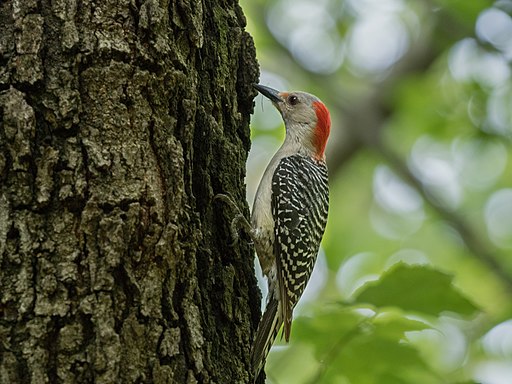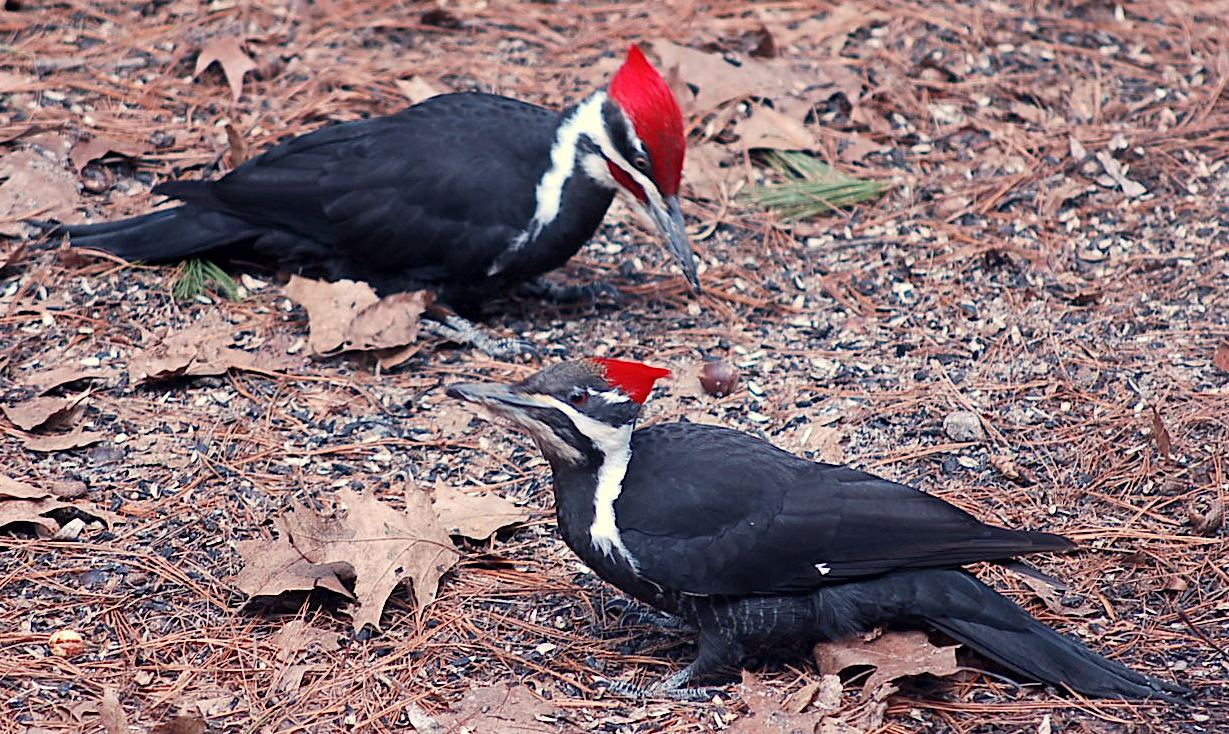Woodpeckers: A Comprehensive Overview to Comprehending These Distinct Birds
Woodpeckers, with their distinct habits and physical features, have long astounded the curiosity of ornithologists and nature lovers alike. As we discover the elaborate makeup, diverse types, and eco-friendly importance of woodpeckers, a much deeper appreciation for these special birds and the enigmas they hold unfolds.

Woodpeckers' Drumming Actions
Woodpeckers display a rhythmic and accurate drumming behavior that serves numerous crucial features in their lives. This habits is primarily related to interaction, area defense, and foraging. The distinctive drumming audio is produced by the rapid pecking of their beaks against tough surfaces such as tree trunks, branches, and even steel items.
Communication is an essential aspect of woodpecker actions, and drumming plays a considerable role in this procedure. Woodpeckers utilize drumming to establish their visibility, draw in mates, and keep contact with their partners and children. The frequency, strength, and duration of drumming series communicate specific messages to various other woodpeckers in the area.
In enhancement to communication, woodpeckers use drumming actions for territory protection. Woodpeckers in Florida. The loud and repeated drumming works as an alerting to potential burglars, indicating that the area is already asserted. By developing their territory with drumming, woodpeckers lower the likelihood of conflicts over beneficial sources such as food and nesting sites
In addition, woodpeckers likewise employ drumming as a foraging method. The rhythmic pecking assists them locate insects concealing underneath the bark of trees by creating vibrations that interfere with the prey's camouflage. This behavior showcases the versatility and ingenuity of woodpeckers in utilizing their drumming skills for numerous important objectives.
Unique Adaptations for Tree Climbing
Having grasped the art of drumming to interact, protect area, and forage, woodpeckers have developed special adjustments that facilitate their exceptional climbing capabilities in their arboreal habitats. Woodpeckers have zygodactyl feet, with two toes pointing forward and 2 toes aiming in reverse. These tail plumes supply security and equilibrium, making it possible for woodpeckers to navigate up tree trunks with accuracy and dexterity.
In addition, woodpeckers have effective neck muscle mass and a distinct skull structure that help in their climbing up capabilities. Their strong neck muscles allow them to swiftly eat tree bark without experiencing whiplash, while their thick skull and small mind work as shock absorbers, securing them from the effect of repeated drumming. These adjustments jointly enable woodpeckers to navigate view the upright world of trees with efficiency and poise.

Duty of Woodpeckers in Communities
Playing a crucial role in forest environments, woodpeckers add considerably to the equilibrium and wellness of their environments through their distinct habits and communications with various other species. One of the essential environmental features of woodpeckers is their duty in controlling insect populaces. By foraging for insects under the bark of trees, woodpeckers aid manage pest populations, avoiding break outs that might hurt the total wellness of the woodland. In addition, woodpeckers develop dental caries in trees that act as essential nesting sites for a variety of other bird species, promoting biodiversity within the community.
In addition, the drumming and articulations of woodpeckers play a crucial function in communication and territory facility. These noises not only offer to draw in companions but additionally aid define boundaries in between various woodpecker territories, reducing problems and advertising a harmonious conjunction within the woodland community. Overall, the visibility of woodpeckers in forest ecosystems highlights their relevance as keystone types, influencing the characteristics and working of these environments in diverse ways.
Composition: Specialized Beaks and Feet
In the detailed web of woodland ecosystems, the specialized beaks and feet of woodpeckers are necessary adaptations that enable them to accomplish their essential eco-friendly roles. Woodpeckers possess one-of-a-kind anatomical functions that are especially designed to help them in their foraging and nesting actions.
One of the most distinctive function of woodpeckers is their solid, chisel-shaped beaks. These beaks are perfectly adapted for boring right into timber to uncover bugs, larvae, and sap concealed beneath the bark of trees. The strong muscle mass and strong framework of their beaks allow woodpeckers to peck at a rate of as much as 20 times per secondly without triggering damages to their heads.
In addition, woodpeckers have specialized feet that aid in their acrobatic climbing capabilities. Their learn this here now feet have 2 toes aiming onward and 2 toes pointing backward, offering a strong hold on vertical surfaces (Woodpeckers in Florida). This special foot plan, together with tight tail plumes that work as an encouraging prop, permits woodpeckers to stick to tree trunks and branches easily while they search for food or dig deep into nesting dental caries
Woodpecker Variety Variety
Woodpeckers are a varied group of birds located throughout various ecosystems worldwide, with over 200 well-known types exhibiting adjustments to various environments. Woodpeckers have actually progressed to inhabit an array of atmospheres, from forests and timberlands to grasslands and deserts, each offering distinct challenges that have actually click here now influenced the advancement of distinct woodpecker varieties.
One more adding aspect to woodpecker species variety is their specialized feeding behaviors. Various species have evolved to make use of various food sources, such as pests, tree sap, fruits, and nuts, resulting in the growth of particular adjustments in beak shape, dimension, and strength. These adaptations make it possible for woodpeckers to forage effectively in their corresponding habitats, minimizing competitors among varieties and promoting specific niche distinction. Additionally, geographic seclusion and historical elements have actually contributed fit the circulation and diversity of woodpecker types, bring about the wide variety of specialized adjustments seen in these fascinating birds.

Verdict
In conclusion, woodpeckers are remarkable birds that exhibit special drumming behavior, specialized adaptations for tree climbing, and play vital functions in ecological communities. With a diverse array of woodpecker species discovered worldwide, these birds are crucial for preserving the wellness and balance of forests and timberlands.